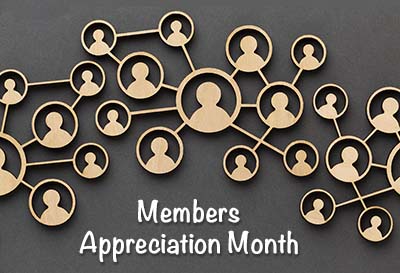
Recently on Facebook, I was asked why I thought originality in animation was such a rare thing today. I pointed out that originality and creativity are closely connected, and they aren’t just magical gifts that you are either born with or you aren’t. They come from a body of knowledge and a set of skills that can be learned. Originality and creativity are both fed by the same things… observation of life, the ability to think like an artist, and a wide range of creative influences.

![]() The primary source of inspiration for all artists is the observation of real life.
The primary source of inspiration for all artists is the observation of real life.
Too many animated films employ character “archetypes”… generic mom and dad characters, typical wimpy kid, his goofy dog and clever cat, bratty little sister… I don’t know about you but those sorts of characters bore me stiff. The best actors will tell you that they don’t create characters by looking at what other actors do or employing stereotypes. They look at real people and try to capture the gestures, walk and attitudes that express that person’s unique personality. It works exactly the same in animation.
When you’re riding the bus, drinking your coffee at Starbucks or standing in line at the DMV, pay attention to the people around you. Look for unique personalities and try to capture them in your sketchbook. Exaggerate and caricature them to see how you might put those personalities across in an animated character. You’ll find that the characters you see on the street are a lot more interesting than the characters you see in most animated films.

![]() In an earlier post on Facebook, I pointed out one of the primary creative skills, *ideation*, the ability to think outside the box and come up with a million different solutions to a problem. Another skill that is invaluable is *analysis*. Analysis is at the core of what it means to think like an artist.
In an earlier post on Facebook, I pointed out one of the primary creative skills, *ideation*, the ability to think outside the box and come up with a million different solutions to a problem. Another skill that is invaluable is *analysis*. Analysis is at the core of what it means to think like an artist.
When the average person sits down to watch an animated film, they are carried away into the fantasy and let the film direct their imagination and entertain them. A film maker thinks differently. Once your mind is trained to understand the process of film making, you will never sit in the theater as just another member of the audience again. You definitely lose that innocence. But it is replaced by something even more important.
When a film maker watches a film, he is looking at the application of technique. How does the film establish its characters and environment? How does it set up the conflict? What rhythms and pacing are being used to carry the film forward… contrasts in moods… staging… color… music… sound effects… acting… dialogue… All these things and more are revealed through analysis. Turn on your brain and your creativity will follow.

![]() Lastly, it’s important to expose yourself to a broad spectrum of artistic creativity… not just the few things you already know about and like.
Lastly, it’s important to expose yourself to a broad spectrum of artistic creativity… not just the few things you already know about and like.
When you as a filmmaker are watching movies, TV shows and animation, you shouldn’t just limit yourself to what you personally *like*. Focus instead on what you can learn from. The principle of garbage in- garbage out applies here. If you watch nothing but lousy animation and stupid movies, what sorts of animation do you expect to produce yourself?
In fact, animation should be just a small portion of what you study and expose yourself to. In order to be a creative artist in animation, you need to understand and appreciate ALL of the arts. This means studying the history of all forms of music- from classical music and opera to country music and jazz. It’s the same with the history of painting, and sculpture, and dance, and most of all- film making.
If you want to train yourself to think analytically about film, choose really good examples from the past to study. Classic films are packed with cinematic techniques that animation hasn’t even touched on yet, and they will open your mind to new genres to explore. In the entire history of animation, there have been thousands of cats chasing mice and dogs chasing cats, but how many gothic horror movies have their been? How many noir thrillers? Westerns? War pictures? People love to say, “There’s nothing new under the sun.” but in animation, that isn’t true. There are a LOT more stories to be told.
Another advantage to using older films as reference is that you are more likely to pull out pure technique and less likely to simply imitate. If you are looking at a WWII movie, you can’t just copy situations and dialogue because it is from a different time and place. Instead, you are forced to focus on the acting, the staging or the cutting technique. Stealing technique isn’t stealing. It requires adaptation to your own context. Copying specific gags, situations or dialogue from modern movies similar to the one you are making is definitely stealing.

![]() The keys to creativity in animated film making are to… 1) Open your eyes to the world around you, 2) Think about what you see- analyze how it works, and 3) Expose yourself to a wider range of creative influences.
The keys to creativity in animated film making are to… 1) Open your eyes to the world around you, 2) Think about what you see- analyze how it works, and 3) Expose yourself to a wider range of creative influences.
When your frame of reference is limited to anime, video games and superhero movies, it shouldn’t be surprising that everything you create is derivative. That kind of background may seem to be a good foundation to build a career in animation on first glance, but look at the animators of the past… Frank Thomas had classical art training from Chouinard, Carlo Vinci won a scholarship to the prestigious National Academy of Design, and Grim Natwick studied painting in Vienna under Gustav Klimt. Animators back then were artists first and animators second. If you want to imitate someone’s approach to creativity, imitate the best! Become an artist.
For the past decade, Animation Resources has been serving artists working in the fields of animation, cartooning and illustration. Our volunteers and members have pulled together to raise the bar for our art form, and it’s time to celebrate… It’s Members Appreciation time again!
During the month of February, Animation Resources expresses our appreciation for to members with a very special Reference Pack, and we invite you to become a member too. For the next 30 days, we will be sharing reasons why you should join us. Our benefits of membership far exceed the cost of our annual dues.
This year, we are trying something new to encourage new memberships. You can join for a one week trial membership for only A DOLLAR! Yes, you get access to everything our annual members get for seven days for only a buck. (Click here for the details on our Dollar Days.) What are you waiting for?
You can find out what our members get at the Member Appreciation Page. It’s easy to join. Just click on this link and you can sign up right now online…
JOIN TODAY!
https://animationresources.org/membership/levels/
![]()
![]() Animation Resources depends on your contributions to support its projects. Even if you can’t afford to join our group right now, please click the button below to donate whatever you can afford using PayPal.
Animation Resources depends on your contributions to support its projects. Even if you can’t afford to join our group right now, please click the button below to donate whatever you can afford using PayPal.
































